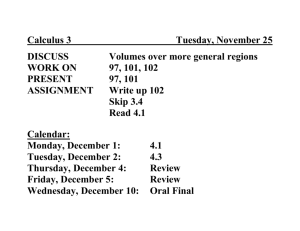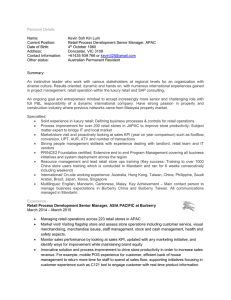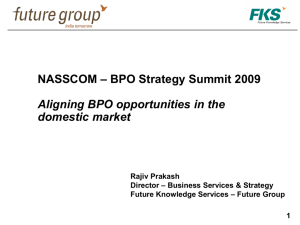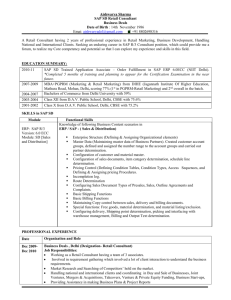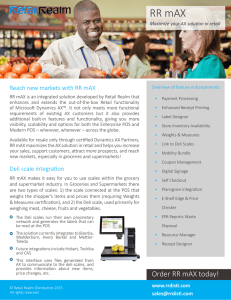Mark Osborn
advertisement
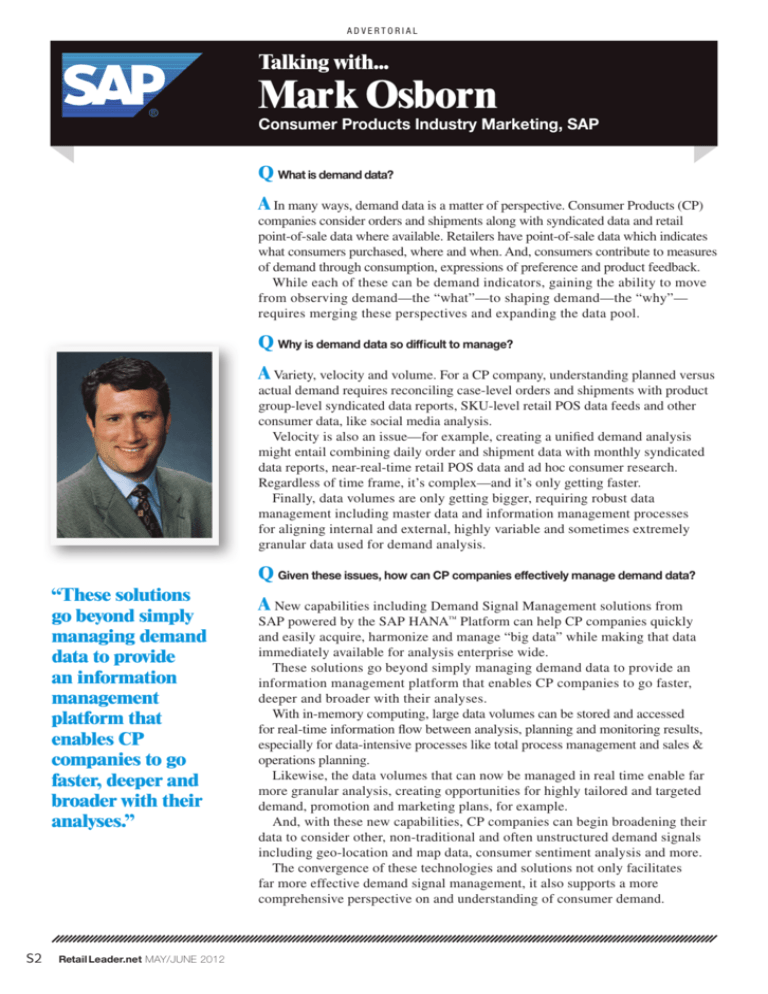
ADVERTORIAL Talking with... Mark Osborn Consumer Products Industry Marketing, SAP Q What is demand data? A In many ways, demand data is a matter of perspective. Consumer Products (CP) companies consider orders and shipments along with syndicated data and retail point-of-sale data where available. Retailers have point-of-sale data which indicates what consumers purchased, where and when. And, consumers contribute to measures of demand through consumption, expressions of preference and product feedback. While each of these can be demand indicators, gaining the ability to move from observing demand—the “what”—to shaping demand—the “why”— requires merging these perspectives and expanding the data pool. Q Why is demand data so difficult to manage? A Variety, velocity and volume. For a CP company, understanding planned versus actual demand requires reconciling case-level orders and shipments with product group-level syndicated data reports, SKU-level retail POS data feeds and other consumer data, like social media analysis. Velocity is also an issue—for example, creating a unified demand analysis might entail combining daily order and shipment data with monthly syndicated data reports, near-real-time retail POS data and ad hoc consumer research. Regardless of time frame, it’s complex—and it’s only getting faster. Finally, data volumes are only getting bigger, requiring robust data management including master data and information management processes for aligning internal and external, highly variable and sometimes extremely granular data used for demand analysis. Q Given these issues, how can CP companies effectively manage demand data? “These solutions go beyond simply managing demand data to provide an information management platform that enables CP companies to go faster, deeper and broader with their analyses.” S2 Retail Leader.net MAY/JUNE 2012 A New capabilities including Demand Signal Management solutions from SAP powered by the SAP HANA™ Platform can help CP companies quickly and easily acquire, harmonize and manage “big data” while making that data immediately available for analysis enterprise wide. These solutions go beyond simply managing demand data to provide an information management platform that enables CP companies to go faster, deeper and broader with their analyses. With in-memory computing, large data volumes can be stored and accessed for real-time information flow between analysis, planning and monitoring results, especially for data-intensive processes like total process management and sales & operations planning. Likewise, the data volumes that can now be managed in real time enable far more granular analysis, creating opportunities for highly tailored and targeted demand, promotion and marketing plans, for example. And, with these new capabilities, CP companies can begin broadening their data to consider other, non-traditional and often unstructured demand signals including geo-location and map data, consumer sentiment analysis and more. The convergence of these technologies and solutions not only facilitates far more effective demand signal management, it also supports a more comprehensive perspective on and understanding of consumer demand.







